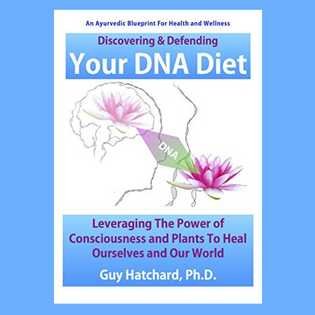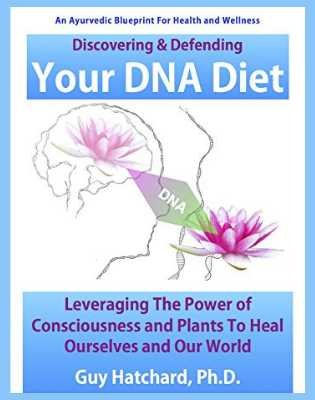This article examines genetically modified yeast in detail and shows how the biotech food industry is deceiving even consumer activists
An article in the UK Telegraph entitled “M&S accused of misleading shoppers with bread ingredients” reports that Marks and Spencer supermarkets have been mislabelling bread. A white loaf with a prominent label claiming “only four ingredients” actually has eleven. A sunflower and spelt loaf labelled six ingredients actually has 13. A flour packet labelled“ancient wheat variety ideal for artisanal style breads” is actually a modern strain.
There is a parallel situation in New Zealand where headline product claims using words like ‘natural’ or ‘contains no artificial additives’ can be completely misleading when you read and closely research the origins and actual content of the small print ingredient list currently required on all foods. In fact, regulations on product labelling are now out of date because of the introduction of genetically modified microorganisms and the resulting residual contamination of foods.
M&S is not the only UK supermarket deceiving its customers. The practice is widespread in the UK and around the globe. Lax labelling laws enable food producers to simply leave out or mislabel a number of ingredients including preservatives and genetically modified microorganisms typically found in ultra processed foods. Some, but crucially not all, deceptive labelling practices have been highlighted by the Real Bread Campaign a project of Sustain: an alliance for better food and farming which is a large membership-based organisation campaigning in the UK for a food system that is healthy for people, animals, and the planet.
So far so good, Sustain with its Real Bread Campaign appears to be leading the charge for healthy food, something we all need. But search their website for articles with the term “genetically modified” and nothing is found. In February we published our article “” Major Health Alert: the Extraordinary Genetically Modified Invasion of Our Supermarkets by Stealth which reported a range of novel food processing aids and ingredients are now produced using genetically modified microorganisms (GMMs). These are used across a very wide range of thousands of supermarket food items including baked goods like bread and many others. Our article reported recently published scientific research which showed the use of GMMs inevitably leads to residual contamination of the end product with bioactive modified synthetics known to be harmful to health. These have been found to include antibiotic genes, antibiotic resistant genes and cell division promoters which can play a role in cancer development.
Genetically Modified Yeast
Let’s look in depth at one such ingredient. We all know that commercial breads contain yeast. What is yeast? A Google search replies:
“Commercial yeasts are primarily a cultivated strain of the microorganism Saccharomyces cerevisiae, grown on molasses, a sugar source, and supplemented with minerals, nitrogen, and vitamins to promote growth.”
Saccharomyces cerevisiae is an ancient species of single-celled fungus, commonly known as baker’s yeast or brewer’s yeast, used for thousands of years to ferment sugars into alcohol and carbon dioxide, making it vital for baking, brewing, and winemaking. This sounds innocuous enough, but now it has been genetically modified to facilitate its additional use in the biotechnology industry to enable cell division, gene expression, and protein interactions vital for the mass production of genetically modified products and medicines.
A 2020 article in the journal Bioengineering entitled “Genetic Engineering and Synthetic Genomics in Yeast to Understand Life and Boost Biotechnology” reports that a commercial bakers yeast known as Sc2.0, is actually a genetically modified version of Saccharomyces cerevisiae. Sc2.0 has been a work in progress since 2006 following on from Sc1.0 an earlier genetically modified version. An article in Nature Communications entitled “Construction and iterative redesign of synXVI a 903 kb synthetic Saccharomyces cerevisiae chromosome” published in January 2025 announced the final iteration of Sc2.0 and its availability for commercial applications including baking. Sc3.0 is already in the planning stage.
Sc2.0 yeast comprises 16 synthetic chromosomes and a new-to-nature tRNA neochromosome, a synthetic chromosome which has no natural counterpart. Sc2.0 is a streamlined, optimised version of the Sc1.0 genome made using computer-aided (AI) design, enabling it to be synthesised from numerous DNA fragments. In additionLoxP sites have been strategically inserted between genes to allow for future genome engineering and the generation of diverse cell variants through processes like SCRaMbLE.
SCRaMbLE (Synthetic Chromosome Rearrangement and Modification by LoxP-mediated Evolution) is a genetic engineering technique used in synthetic yeast genomes to create massive, diverse genetic variations such as deletions, inversions, and translocations by inducing recombination between LoxPsym sites at specific locations in the DNA when Cre recombinase is introduced. Cre recombinase facilitates genetic manipulation and is widely used in research, particularly in conditional mutagenesis to study gene function by creating conditional gene knockouts in specific tissues or at specific times.
The modified yeast used to make bread can be prepared to look much the same as the natural product used for thousands of years—little beige granules which do their magic when added to water and flour, but they are not the same. The modified genetic sequences of Sc2.0 are designed to facilitate processes like cell division, a necessary driver of cancer development. The effect of Sc2.0 on human health has not been studied. Incredibly, its developers have persuaded regulators that it should be ‘presumed safe’ when used by the food industry.
To give you an idea of the level of biosynthetic activation present in Sc2.0, in addition to bread making it is being used to make antibiotics, mRNA vaccines, novel proteins, biofuels, and high value chemicals. It is also used to rapidly mutate biomolecules and as a platform for the large-scale integration and optimisation of foreign genes.And it is in our daily bread.
At the risk of over using a cliche, what could possibly go wrong?
It seems the Real Bread Campaign has not yet got their head around the difference between ancient yeast and Sc2.0. Who can blame them? tRNA neochromosome, LoxPsym, Cre recombinase and SCRaMbLE are terms that only recently entered the English language. They carry little meaning or significance for the general population. Yet the word‘yeast’ still appears on bread labels as if time has stood still for bread making through the centuries since Christ fed thousands with wholesome loaves and fishes. It hasn’t. tRNA neochromosome, LoxPsym, Cre recombinase and SCRaMbLE are now on the daily menu for the faithful followers of commercial bread, home bread machines and pizza. The Real Bread Campaign, GE Free NZ, and other consumer groups have not yet sounded the alarm, leaving the public in the dark and at risk.
If we want to avoid genetically modified bread ingredients that our regulators have designated GRAS (presumed safe without adequate testing) try making sourdough at home or buy from a genuine artisan baker. Our food system is being genetically modified by the hour and yeast has been modified to ensure that future exotic genetic modifications are made easy. On Friday the Health Select Committee will announce its recommendation on the Gene Technology Bill. The Bill does not contain the word ‘label’ anywhere and makes no provision to inform consumers about genetic modification of our traditional foods. Unfortunately very few if any consumer organisations have informed themselves or us about what is happening. It is time to wake up.






